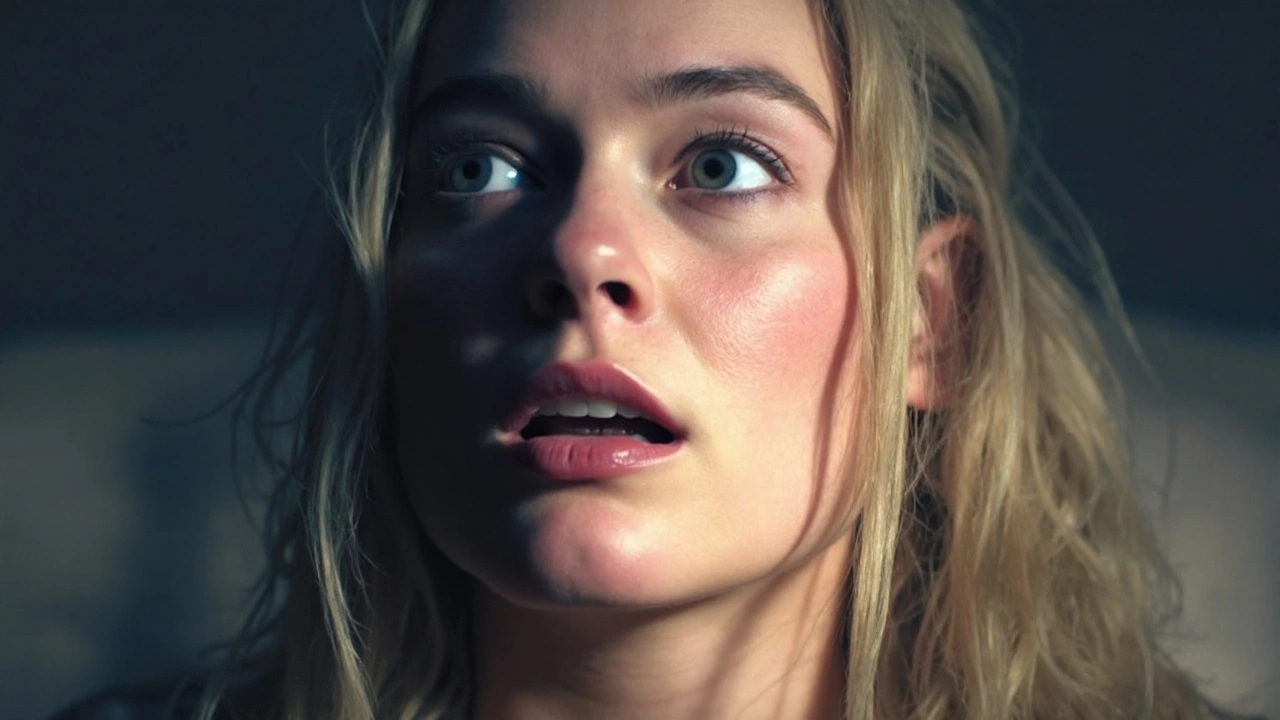A stormy first look at a classic love story turned dangerous
The first teaser for Wuthering Heights doesn’t waste time. In 92 seconds, it sketches a romance that burns hot and cuts deep: Jacob Elordi’s Heathcliff stalks the Yorkshire moors like a bruise you can’t ignore, and Margot Robbie’s Catherine Earnshaw answers him with that sharp, magnetic energy she’s built a career on. Warner Bros. dated the drop for September 3, 2025, staking an early claim on one of 2026’s headline releases.
Emerald Fennell—Oscar and BAFTA winner for Promising Young Woman and the provocateur behind Saltburn—writes and directs. You can feel her fingerprints in the teaser’s tone: beautiful, cold, and a little cruel. There’s a shard of dialogue that sticks: “I can follow you like a dog to the end of the world.” It’s not cozy romance; it’s obsession rendered in wind and mud. That’s the promise this footage makes.
The images are spare but loaded. A weather-beaten farmhouse. Rain on slate. A hand clawing at a door. Robbie’s Catherine seems split between ecstasy and self-destruction; Elordi’s Heathcliff is all watchful hunger, his expression a dare. We glimpse the Linton world—lighter fabrics, finer rooms—then a cut back to the moors with a sound design that swells like a storm front. The edit hints at a story told in jolts: quick jumps between childhood and adulthood, desire and damage.
The production frames the moors as a character of their own. This isn’t watercolor-pretty Yorkshire. The horizons look wide and unfriendly; the wind feels like a verdict. If Fennell keeps this palette, the film will lean into Brontë’s gothic weather—mood as plot, landscape as destiny.

What the film is aiming for—and why it matters now
Adaptations of Emily Brontë’s 1847 novel rise or fall on whether they accept the book’s nastiness. It’s not a courtship; it’s two people locking onto each other like flint and steel and letting the sparks scorch everyone nearby. Judging by the teaser, Fennell isn’t sanding anything down. That tracks with her past work, which pokes at power, class, and the lies people tell themselves to survive.
Robbie as Catherine is canny. She can flip from charm to menace in a single glance—handy for a woman who wants everything and can’t forgive the world for telling her no. Elordi’s casting is equally pointed. After Priscilla and Saltburn, he’s proven he can play charisma with a cruel edge. Heathcliff needs that mix: someone you believe could be adored and feared in the same heartbeat.
The supporting cast carries weight. Hong Chau steps in as Nelly Dean—the story’s key observer and, depending on the adaptation, its moral compass or its unreliable narrator. Shazad Latif’s Edgar Linton and Alison Oliver’s Isabella Linton bring a softer, fancier counterpoint to the wildness of Wuthering Heights. BAFTA winner Martin Clunes and Ewan Mitchell round it out in undisclosed roles, adding texture on the margins. The film also casts Charlotte Mellington, Owen Cooper, and Vy Nguyen as the younger Catherine, Heathcliff, and Nelly, a sign the script may lean into the novel’s formative early years rather than treating them as a prologue.
The creative package is a reunion as much as it is a new play. The film is presented as a Lie Still & LuckyChap Entertainment production, with Warner Bros. Pictures and MRC partnering. LuckyChap—co-founded by Margot Robbie and Tom Ackerley—has a track record of backing sharp, risk-taking projects, from I, Tonya to Promising Young Woman to Barbie. Josey McNamara produces alongside Fennell and Robbie, with Sara Desmond and Ackerley on board as executive producers. It’s the kind of lineup that signals studio muscle with indie instincts.
Release strategy says a lot. The U.S. opens on February 13, 2026—Valentine’s Day weekend—while international territories start two days earlier, on February 11. It’s a smart date for counterprogramming: couples will show up for romance; the movie will offer something darker and more complicated. An early-September teaser, 17 months out, also leaves space for a prestige-style slow burn—additional trailers, character spots, maybe a fall festival bow in 2025 if the cut is ready. None of that is confirmed, but the cadence fits a film pitched to both mainstream audiences and awards voters.
What’s not in the teaser is as interesting as what is. There’s no clear sign of the book’s frame narrative—the visitor Lockwood hearing Nelly’s account—or any heavy exposition. We don’t see much of Thrushcross Grange. There are no title cards spelling out dates or time jumps. This could be misdirection, or it could hint at a cleaner line through the material: fewer storyteller layers, more proximity to Catherine and Heathcliff’s heat.
Fennell excels at making setting do thematic work. In Promising Young Woman, bright pastels hid a blade; in Saltburn, old money turned rotten in the summer sun. Here, the moors look like a test. Expect costume and production design to push that idea: textures that feel alive, rooms that seem either too tight or too exposed, and clothes that read like armor when characters need it and shackles when they don’t. No composer or cinematographer has been announced yet, but the soundscape in the teaser—low, heavy, with sharp accents on breath and footsteps—suggests the score may play rhythm more than melody.
For viewers keeping score with past adaptations, this version has room to stake out its own territory. William Wyler’s 1939 film (Laurence Olivier, Merle Oberon) turned the book into a tragic romance with classical sweep. Peter Kosminsky’s 1992 take (Juliette Binoche, Ralph Fiennes) tried to tackle both generations, packing in plot but softening some edges. Andrea Arnold’s 2011 version stripped the story to bone and weather, shooting handheld on the moors with a feral energy. Fennell seems to be aiming for something paradoxical: a big, studio-scale production that still feels intimate and dangerous.
There’s also the question of perspective. Nelly Dean has often been a scold or a scolded witness. With Hong Chau—an actor who plays empathy without sentiment—the character could become the movie’s quietly beating heart, or its most piercing critic. That matters because Wuthering Heights isn’t just the story of two lovers; it’s the story of what their love does to everyone else.
Robbie arrives at this role from a monster hit (Barbie) and a run of producer-led projects where her taste has pushed the industry, not chased it. Elordi’s last year put him on a steep climb—Priscilla’s cold-blooded Elvis, Saltburn’s glittering cipher, the continued Euphoria attention. Putting them together is marketing catnip, sure, but it’s also a chance to test star image against a text that resists easy swooning.
If you’ve never read the novel, here’s the core: Heathcliff, an outsider taken in by the Earnshaw family, and Catherine, the daughter of the house, grow up entwined. Class, pride, and raw stubbornness pull them apart. They hurt each other. Then they hurt other people because they can’t stop trying to fix the wound by reopening it. The story spills into the next generation, where the damage either repeats or heals. The book’s greatness lies in its refusal to excuse anyone. Love is powerful. It’s also selfish, vengeful, and sometimes annihilating.
Will the film go full two-generation arc? The presence of young actors says yes to the early chapters; the teaser doesn’t show much of the later ones. That’s a mystery the next trailer will probably answer. The rating is unannounced, but the tone points to a likely R: violence, sexuality, and the kind of emotional cruelty that lands hard. The running time is also unknown. With this story, shorter than two hours would be a surprise; Brontë packs a lot of weather and war into her people.
Craft questions linger in pleasant ways. Will the camera keep its distance—letting the landscape dwarf the characters—or press in until faces turn into maps of bad decisions? Will Fennell find a visual language for obsession that doesn’t romanticize abuse but also doesn’t sanitize it? How the film threads that needle will define whether it lands as a haunting or a provocation.
One more thing worth watching: how it casts and frames class. Fennell’s work bristles when money and desire collide. The Lintons’ surfaces—glossy, tasteful, supposedly civilizing—often hide rot. The Earnshaw home, by contrast, is rough but honest in its ugliness. Expect the production design to do a lot of talking before anyone opens their mouth.
The trailer’s early release also gives Warner Bros. room to build chapters: a character-focused second trailer, a final trailer with plot spine, featurettes on the moors and costume construction, track reveals from the score, and, if the cut is ready, a late-2025 festival premiere to frame the narrative going into winter. Studios don’t platform a literary adaptation like this unless they think it can play both to date-night crowds and to critics who love a messy heart.
Until then, the teaser does its job. It promises a film that takes romance seriously by refusing to make it gentle. It hands two of the most watched actors in the business a pair of roles that could define a decade if they land them with the right kind of ferocity. And it gives Emerald Fennell a sandbox big enough to build a storm.
- Title: Wuthering Heights (2026)
- Director/Screenwriter: Emerald Fennell
- Leads: Margot Robbie (Catherine Earnshaw), Jacob Elordi (Heathcliff)
- Cast: Hong Chau (Nelly Dean), Shazad Latif (Edgar Linton), Alison Oliver (Isabella Linton), Martin Clunes, Ewan Mitchell; younger roles played by Charlotte Mellington, Owen Cooper, Vy Nguyen
- Producers: Josey McNamara, Emerald Fennell, Margot Robbie
- Executive Producers: Sara Desmond, Tom Ackerley
- Production Companies: Lie Still, LuckyChap Entertainment; in association with Warner Bros. Pictures and MRC
- Teaser length: 1 minute, 32 seconds
- U.S. release: February 13, 2026 (wide theatrical)
- International rollout: starting February 11, 2026
- Rating: TBA

